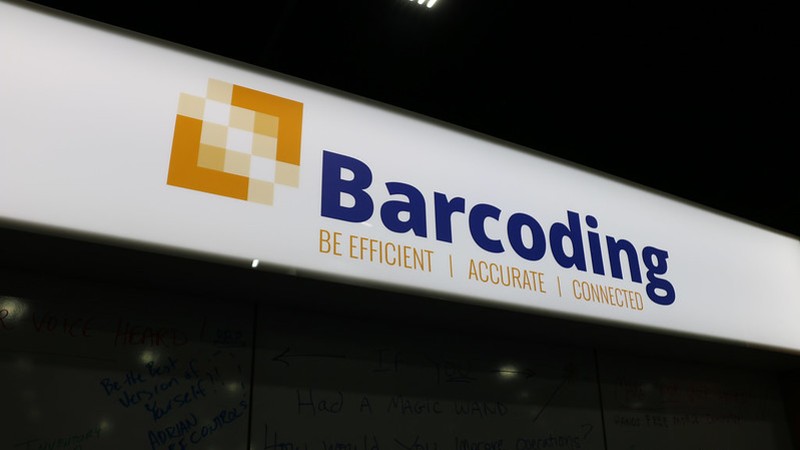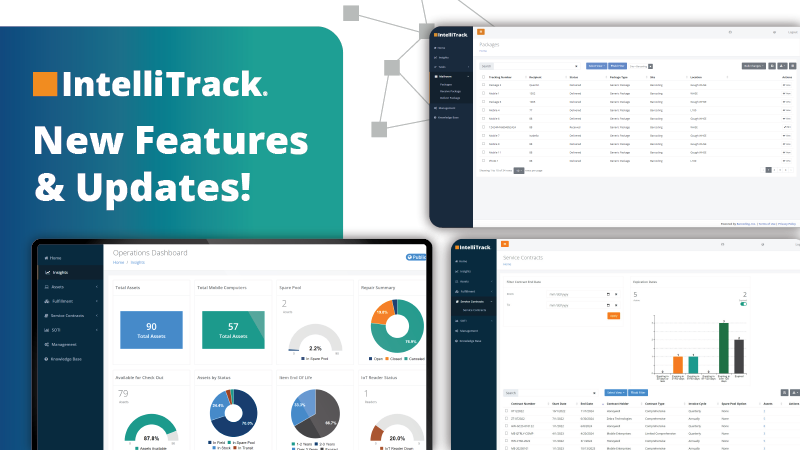As supply chains grow and become more complex, they also become more vulnerable to disruption and breakdown. A hiccup at any point can ripple through many manufacturing and distribution processes—and productivity can quickly grind to a halt.
That’s why we’re seeing so many more companies using Ultra High Frequency (UHF) Passive RFID (known as RAIN) for supply chain management. By incorporating RAIN-based solutions into daily operations in manufacturing, warehouse and distribution centers (DCs), those stakeholders can offer optimal visibility by enabling item level tracking and supply chain traceability.
While RAIN is part of today’s IoT, additional and complementary technologies like industrial scanning and machine vision, automated mobile robots (AMR), and IoT sensors comprise a robust set of options for streamlining business processes. Together, these technologies can improve speed and increase inventory accuracy while reducing errors and labor costs.
Retail giant Walmart has announced that it will expand its requirement for RFID tagged merchandise from suppliers starting in September 2022. But they’re far from the only company that has identified RAIN’s supply chain benefits.
In fact, suppliers may find they can also put those RAIN tags to use within their own operations to improve inventory visibility, pick and pack accuracy, track shipments, and optimize labor in their own workflows.
Visibility Improvements with RFID Solutions
Because RAIN can enable tracking of items at every stage in a supply chain process flow, a manufacturer or distributor can quickly gather robust data on each workflow. That valuable data makes it faster and easier to identify sources of system gridlock and more optimal options and work-arounds in terms of suppliers, materials, shipping, and logistics.
But it’s not just RAIN’s granular detail that’s so valuable—it’s also the value of that data in real time. When it comes to inventory, information ages quickly, and data’s value degrades almost as soon as it’s gathered. A RAIN-based solution that offers real-time visibility can eliminate the gap between cycle counts and true inventory data.
Plus, by applying analytics to the high volumes of data RAIN makes possible, businesses can identify anomalies and discover root causes faster than ever. Whether it’s a simple clerical error or something more nefarious, businesses can find and stop losses to improve profitability.
Improved Accuracy
Inaccurate inventory is expensive, and without RAIN solutions, companies often face tough choices. For example, retailers risk losing customers to outages and shortages, or they can pad inventory with safety stock, only to sell it at a costly discount down the line. Inventory inaccuracy carries other expenses, too: the labor costs of extra handling, the logistics and shipping needed to move safety stock, warehousing space, and more.
But the 30% improvement RFID delivers in inventory accuracy means retailers can reliably sell higher proportions of their stock—because they always know what they have and where to find it. That means more agile inventory management, from receiving to retail sale.
Further upstream, DCs and manufacturers can enable more accurate item-level picking, packing and shipping operations with item-level RAIN tagging. Item-level tagging allows automated processes to be brought on to provide item and/or case-level visibility, to ensure the proper items are packed in an order. Those RAIN-enabled cases can, in turn, be associated with RAIN-enabled pallets. The end result is the certainty that the right items are loaded on the right truck, destined for the right customer.
Optimizing Omni Channel Distribution
That visibility improvement is especially critical for businesses integrating ecommerce, BOPIS, curbside pickup, and other omnichannel distribution options. Being able to respond quickly to customer demand is fundamental to success in a fiercely competitive ecommerce environment. RAIN based supply chain solutions help keep a constant, close watch over inventory.
Automated workflows can trigger reordering at the optimal moment and monitor demand trends, and robust datasets help ensure optimal timing to prevent stockouts without creating overstock issues.
Productivity Improvements & Labor Savings
RAIN introduces new opportunities to increase productivity and reduce wasted time, movement, and effort by workers. Where product and shipment barcodes require close enough access to scan, RFID-enabled labels don’t need to be within line of sight to be read by equipment. In addition, RFID tags can “ping” in bulk—enabling the equipment to “read” a whole pallet at once, from a distance of several meters (using passive, or RAIN RFID, tags).
If you can skim movement, scanning, logging, and other efforts from tasks such as locating, identifying, and counting items, you can eliminate labor from countless work processes. That frees up employees to do higher-value tasks that only humans can fulfill.
How to Maximize the Benefits of RAIN RFID
If RAIN is an optimal solution for your supply chain workflows, correct implementation is absolutely critical to get the best ROI for your investment. Reach out to an experienced team whose experts can guide you through the evaluation and planning steps required to properly integrate RFID technology into your processes.
You can gain a deeper understanding of what to expect when you download our free guide, Best Practices for RFID Implementation. Click below to get yours now.







